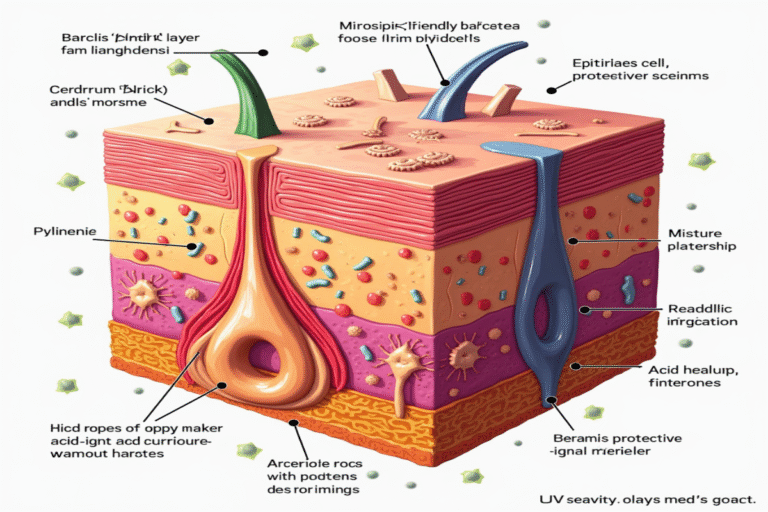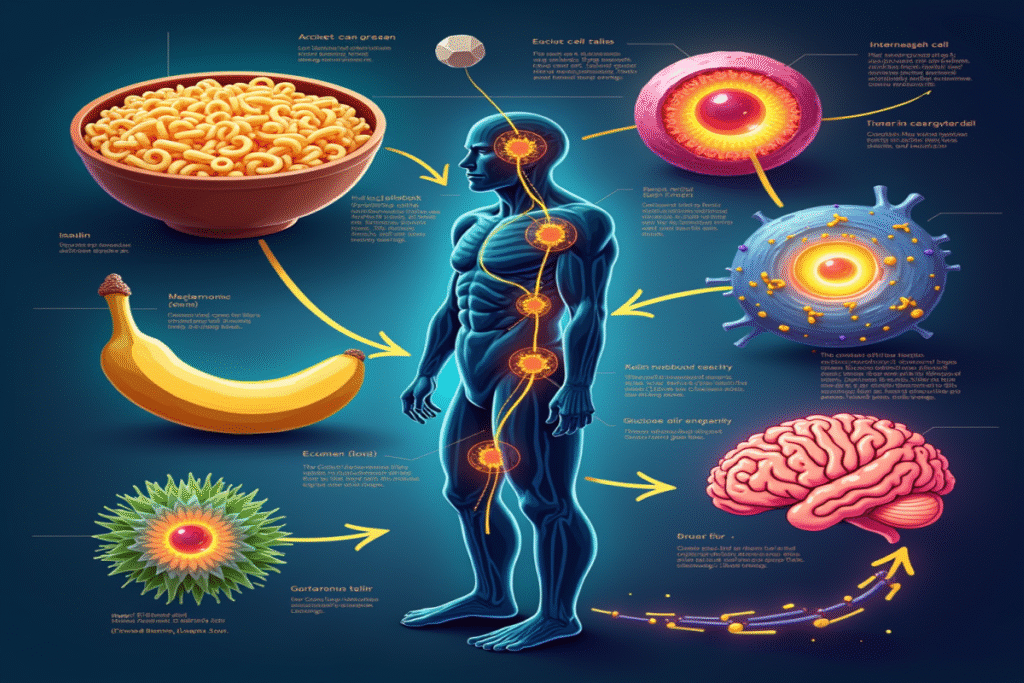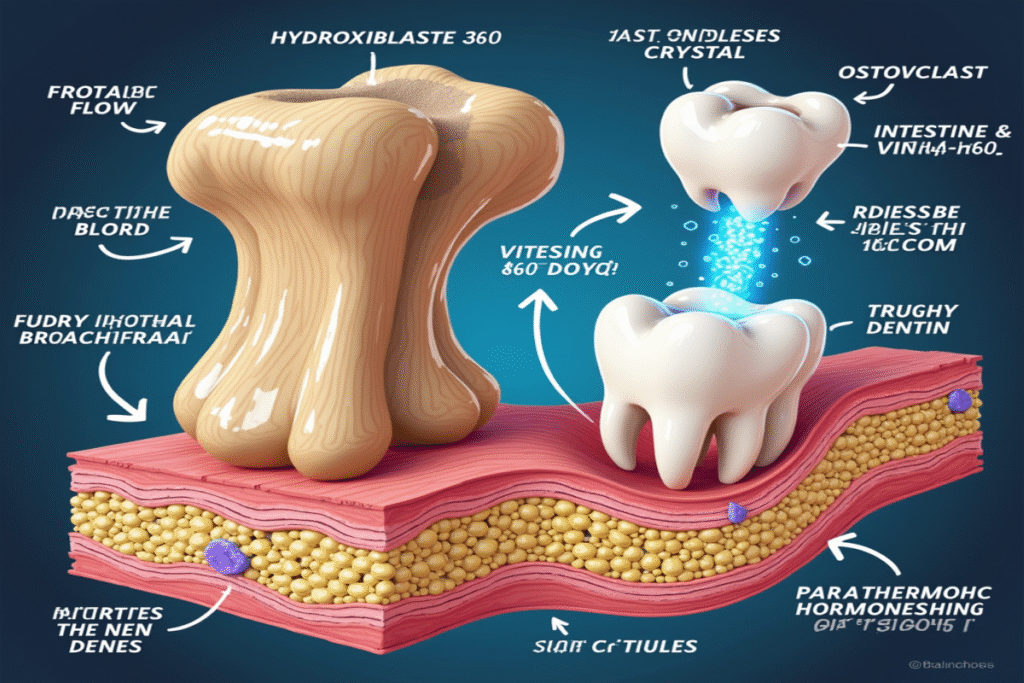Did you know that your skin, the largest organ in your body, is actually a sophisticated biological fortress? This remarkable shield weighs about 8 pounds and covers approximately 21 square feet of surface area in the average adult. Every inch of it works tirelessly to protect you from a world full of potential threats.
The Three-Layered Shield: Understanding Your Skin’s Architecture
Your skin’s protection begins with its three-layer design:
- Epidermis – The outermost layer, constantly renewing itself about every 28 days.
- Dermis – The middle layer, containing blood vessels, nerve endings, and collagen.
- Hypodermis – The deepest layer, made mainly of fat and connective tissue.
The epidermis is especially important for defense. Its structure is like a brick wall where specialized cells called keratinocytes serve as the bricks, and lipids (fats) act as the mortar. This setup creates a strong barrier that keeps out most pathogens and chemicals.
Your Personal Acid Mantle: The Chemical Bodyguard
One of the most fascinating features of your skin is its acidic surface, known as the acid mantle. With a pH usually between 4.7 and 5.7, your skin is slightly acidic. This acidity makes it hard for many harmful bacteria, which prefer neutral or alkaline conditions, to survive.
Your skin creates this protective acid mantle through a mix of:
- Sebum (oil) from sebaceous glands
- Sweat from eccrine glands
- Natural moisturizing factors (NMFs)
- Byproducts of the skin’s microbiome
When you wash with harsh soaps or frequently use alcohol-based products, you disrupt this acid mantle, making your skin temporarily more vulnerable until it recovers.
Your Skin’s Microbial Ecosystem: Allies in Defense
Your skin is home to about 1 trillion bacteria from more than 1,000 different species. These microbes are helpful allies, not harmful invaders, and are an essential part of your skin’s defense.
These beneficial bacteria help by:
- Consuming resources that harmful bacteria would use
- Producing antimicrobial compounds that kill invaders
- Training your immune system to recognize real threats
- Helping maintain the skin’s optimal pH
Research shows that strains like Staphylococcus epidermidis produce their own antibiotics to fight off dangerous bacteria like MRSA. This invisible battle goes on every day on your skin!
Your Skin’s Immune Army: Always on Alert
Besides physical and chemical barriers, your skin contains specialized immune cells that constantly watch for threats. Among the most important are Langerhans cells, which capture potential pathogens and present them to T-cells in your immune system, showing your body what to fight.
Your skin also has special T-cells called resident memory T-cells that stay in the skin after an infection. These cells remember past invaders and respond quickly if the same threat returns—a form of local immune memory that gives added protection.
The Waterproof Wonder
Your skin’s barrier does more than keep out harmful substances—it also prevents excessive water loss. This waterproofing comes from special lipids called ceramides, which form protective layers between cells.
Human skin is so efficient at water control that it loses only about half a liter of water per day through transepidermal water loss. Without this protection, you would quickly become dehydrated.
Anti-Toxin Defense System
When chemicals contact your skin, several defense strategies help neutralize them:
- Your skin sheds about 30,000 dead cells every minute, removing surface contaminants
- Detoxifying enzymes break down harmful substances
- Melanin absorbs UV radiation to protect against DNA damage
- Proteins bind to heavy metals and other toxins
Self-Healing Properties: The Repair Crew
One of your skin’s most impressive abilities is self-repair. When it’s injured, a sequence of events takes place:
- Blood vessels constrict to reduce blood loss
- Platelets form clots to seal the wound
- Inflammation brings immune cells to fight infection
- Fibroblasts produce collagen to rebuild tissue
- Keratinocytes move in to close the wound’s surface
This repair process runs non-stop, repairing everything from tiny daily damage to larger injuries that need more care.
Supporting Your Skin’s Natural Defenses
Given everything your skin does, it deserves support. Experts recommend:
- Using pH-balanced cleansers that protect the acid mantle
- Moisturizing regularly to keep the barrier strong
- Using sunscreen to prevent UV damage
- Maintaining a healthy skin microbiome by not overusing antibacterial products
- Eating a diet rich in vitamins A, C, E, and omega-3 fatty acids
The next time you touch your skin, remember you’re connecting with an amazing living shield—a marvel that’s evolved over millions of years to defend you from countless threats. Its complex systems work together, providing such effective protection that we rarely stop to appreciate its remarkable abilities.





